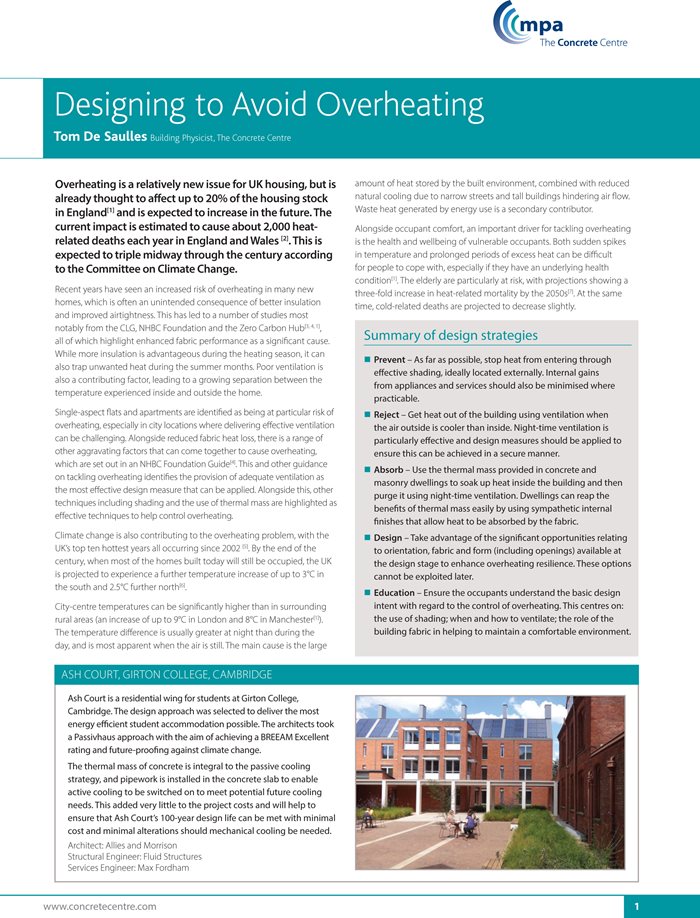Related links
Related articles

With tougher targets for both homes and non-domestic buildings, the government is continuing to push construction towards zero-carbon, with further cuts to follow in 2025. Tom De Saulles explains
Overheating and Part O
Recent years have seen an increased risk of overheating in many new homes, which is often an unintended consequence of better insulation and improved airtightness. This has led to a number of studies most notably from the DCLG, NHBC Foundation and the Zero Carbon Hub, all of which highlight enhanced fabric performance as a significant cause. While more insulation is advantageous during the heating season, it can also trap unwanted heat during the summer months. Poor ventilation is also contributing to the problem, leading to a growing separation between the temperature experienced inside and outside the home.
Single-aspect flats and apartments are identified as being at particular risk of overheating, especially in city locations where delivering effective ventilation can be challenging. Alongside reduced fabric heat loss, there is a range of other aggravating factors that can come together to cause overheating. Guidance on tackling overheating identifies the provision of adequate ventilation and shading as being the most effective design measures to apply. Other techniques are also identified including the use of thermal mass with night cooling, which offers a further means of helping to control overheating.
Summary of design strategies
- Limiting solar gains – Apply design measures that limit solar gain, which can include external shading, solar control glass and optimising the orientation and glazing area.
- Remove excess heat – Provide openings for adequate ventilation, ideally located on opposite facades to promote cross flow. Night ventilation is very effective at removing heat from the fabric and works particularly well in dwellings with thermal mass.
- Absorb – Use the thermal mass provided in concrete and masonry dwellings to soak up excess heat inside the building during the day and then purge it using night-time ventilation. The use of thermal mass in this way can lower the peak internal temperature by several degrees.
- Provide information – Ensure the building owner is given sufficient information regarding the provisions that have been made to comply with Part O and the way in which systems should be operated to protect against overheating.
For more information, download The Concrete Centre guide on Overheating. In addition to offering guidance on the use of thermal mass, this publication also provides an overview of the new Part O regulations, which deal specifically with overheating in new residential buildings and sets out new requirements for delivering safe and usable overheating measures.
Overheating guide

On-demand webinar
This webinar provides an outline of Part O of the building regulations, which deals with overheating mitigation in residential buildings.